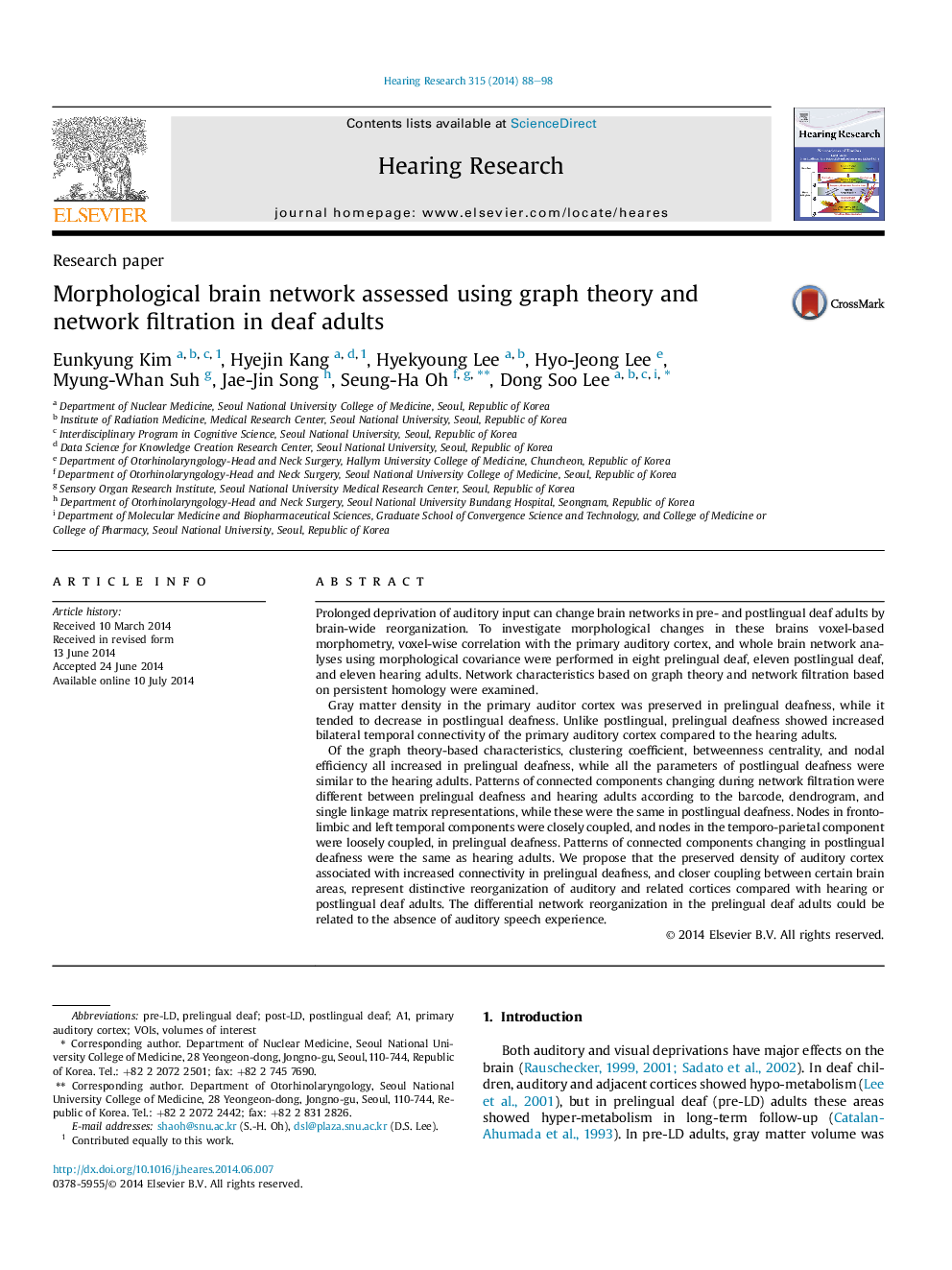| Article ID | Journal | Published Year | Pages | File Type |
|---|---|---|---|---|
| 6287372 | Hearing Research | 2014 | 11 Pages |
Abstract
Of the graph theory-based characteristics, clustering coefficient, betweenness centrality, and nodal efficiency all increased in prelingual deafness, while all the parameters of postlingual deafness were similar to the hearing adults. Patterns of connected components changing during network filtration were different between prelingual deafness and hearing adults according to the barcode, dendrogram, and single linkage matrix representations, while these were the same in postlingual deafness. Nodes in fronto-limbic and left temporal components were closely coupled, and nodes in the temporo-parietal component were loosely coupled, in prelingual deafness. Patterns of connected components changing in postlingual deafness were the same as hearing adults. We propose that the preserved density of auditory cortex associated with increased connectivity in prelingual deafness, and closer coupling between certain brain areas, represent distinctive reorganization of auditory and related cortices compared with hearing or postlingual deaf adults. The differential network reorganization in the prelingual deaf adults could be related to the absence of auditory speech experience.
Related Topics
Life Sciences
Neuroscience
Sensory Systems
Authors
Eunkyung Kim, Hyejin Kang, Hyekyoung Lee, Hyo-Jeong Lee, Myung-Whan Suh, Jae-Jin Song, Seung-Ha Oh, Dong Soo Lee,
